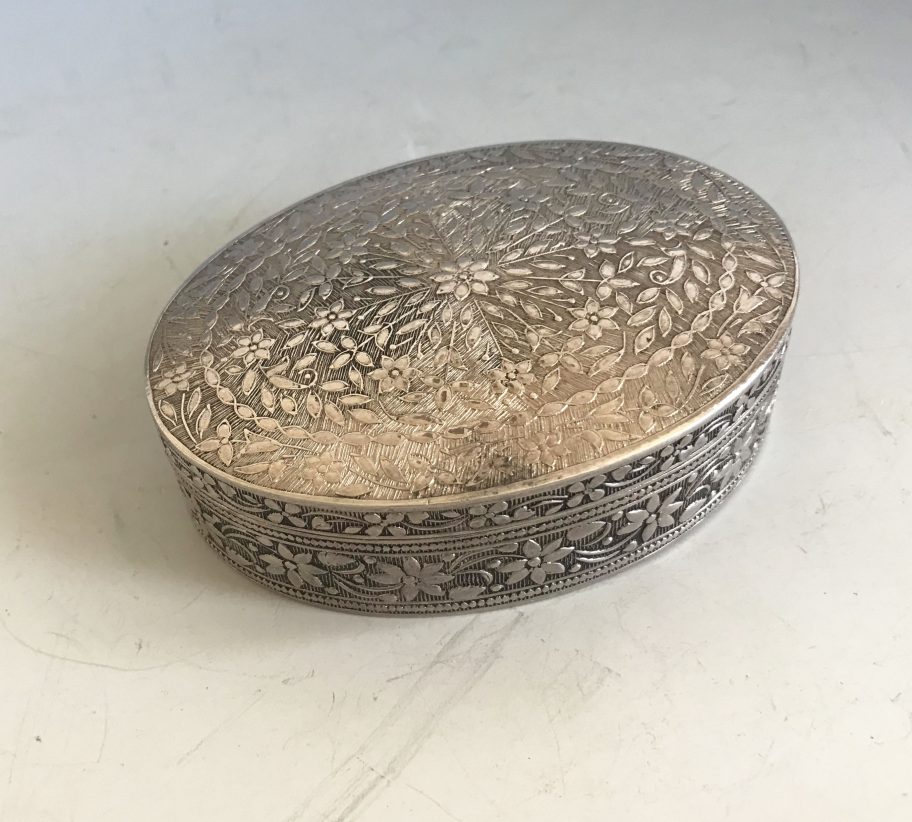Description
Fine Vintage Laotian silk Chok weaving interior design Textiles
A beautiful Vintage Laotian Hand woven Silk Chok cloth in black background with a variety of supplementary colours with detailed geometric and mythical animal designs, a stunning piece of silk weaving executed by some of the best and most skilled weavers in the world. Chok weaving is a technique where two or more different coloured threads are inserted between each row of warp thread. These are inserted by hand, so it’s akin to embroidery or carpet weaving in addition to the normal weaving techniques.
Size 80 x 18 inches 200 x 45 cm approx.
Period 1970 `s.
About weaving in Laos
The evolution of weaving in Laos, which emerged from the cultural contact between different ethnic groups, has created some of the most intricate and stunning textiles to come from the simple floor loom. For more than 40 years following World War II, Lao weaving all but disappeared. Within a few short years, Lao textiles, in particular the Lao Tai people’s supplementary weft weaving, travelled from the brink of extinction to what is considered by collectors and connoisseurs to be amongst the finest textiles in the world.
Silk production, dying and weaving reached Laos with the arrival of the Tai Kadai people from Yunnan in today’s China, around 1,200 years ago. As they travelled through the region, they encountered the indigenous Mon-Khmer people who were already weaving other types of fabric, mostly raw cotton and hemp.
In Lao-Tai textiles, there is an image of great beauty, power, and mystery. It is an
image known to weavers as the pii nyak, “the great or evil spirit” The design of
the image in textiles has two parts: a diamond-shaped head, known as a gaap
pattern, that has upright crests, eyes, and earrings, and two arm-like “appendages”
that derive from the serpent, the Lao ngueak or naak (naga). These limbs come in two
varieties: either the coiled tail of the serpent asleep, or the upright head of the serpent
in motion. The “great spirit” figure appears in a number of different textiles. We find it
woven into head cloths, worn here by a weaver from Xam Tai and used for
everyday, ceremonial, or shamanic wear; into body wraps, worn here by a woman in
Muang Vaen and used by parents to carry children, or by men and women
when they go traveling; into shamanic healing cloths, shown here by a healing shaman
(maw mon) from a village outside of Xam Tai and into Buddhist door curtains
or temple hangings . In each of these cases, the pii nyak, itself once an evil spirit
but now embedded in a textile, provides protection from other evil spirits and, thereby,
ensures the prosperity of the user.
Price Please contact













